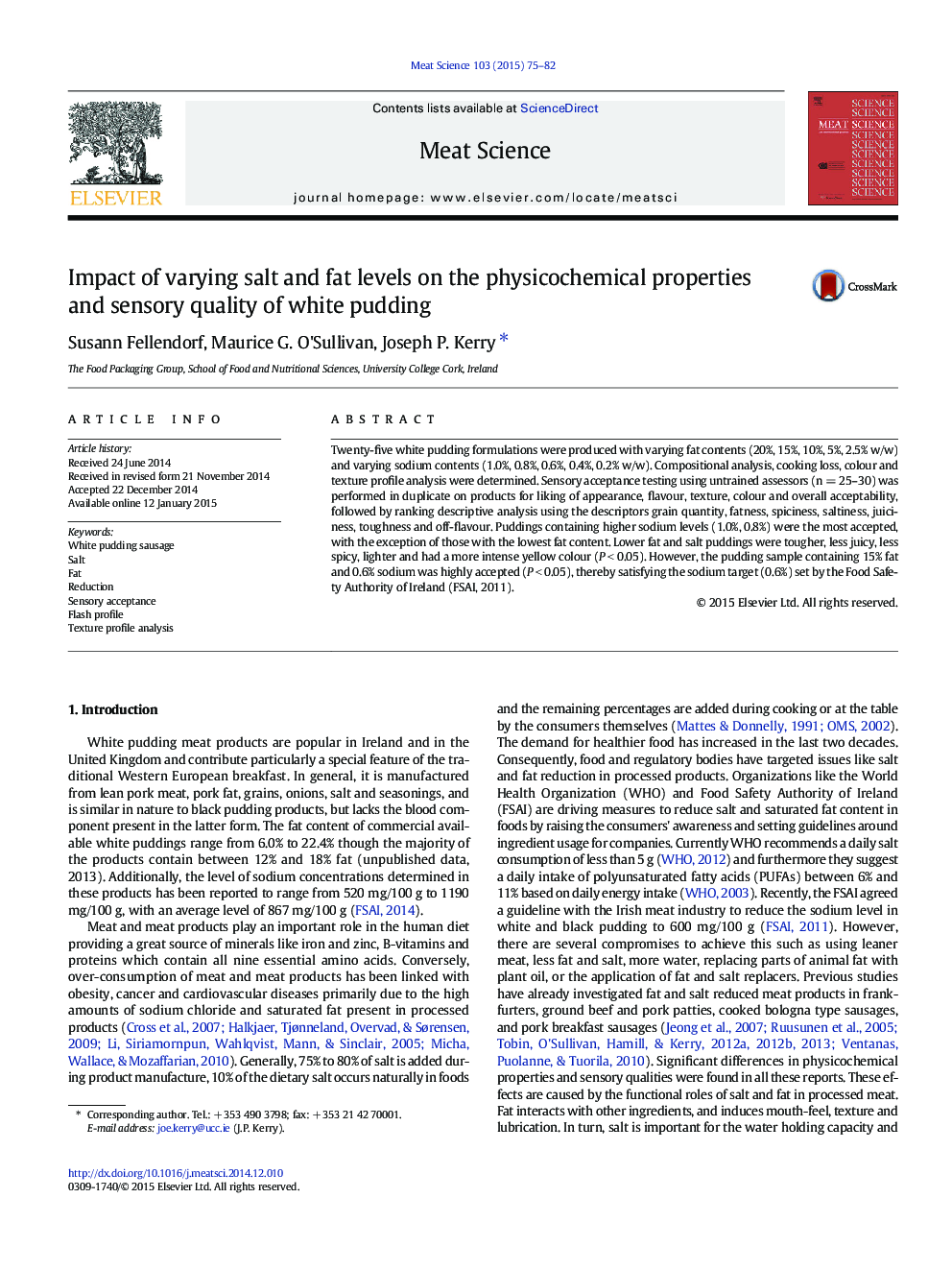| Article ID | Journal | Published Year | Pages | File Type |
|---|---|---|---|---|
| 2449824 | Meat Science | 2015 | 8 Pages |
•Impact of 5 sodium and 5 fat levels on the physiochemical and sensory properties of white pudding.•Undertook compositional analysis, cooking loss, colour, texture profile analysis, sensory analysis.•Puddings containing higher sodium levels were most accepted.•Sample containing 15% fat and 0.6% sodium was accepted, satisfying the sodium target (0.6%) set by the FSAI.
Twenty-five white pudding formulations were produced with varying fat contents (20%, 15%, 10%, 5%, 2.5% w/w) and varying sodium contents (1.0%, 0.8%, 0.6%, 0.4%, 0.2% w/w). Compositional analysis, cooking loss, colour and texture profile analysis were determined. Sensory acceptance testing using untrained assessors (n = 25–30) was performed in duplicate on products for liking of appearance, flavour, texture, colour and overall acceptability, followed by ranking descriptive analysis using the descriptors grain quantity, fatness, spiciness, saltiness, juiciness, toughness and off-flavour. Puddings containing higher sodium levels (1.0%, 0.8%) were the most accepted, with the exception of those with the lowest fat content. Lower fat and salt puddings were tougher, less juicy, less spicy, lighter and had a more intense yellow colour (P < 0.05). However, the pudding sample containing 15% fat and 0.6% sodium was highly accepted (P < 0.05), thereby satisfying the sodium target (0.6%) set by the Food Safety Authority of Ireland (FSAI, 2011).
